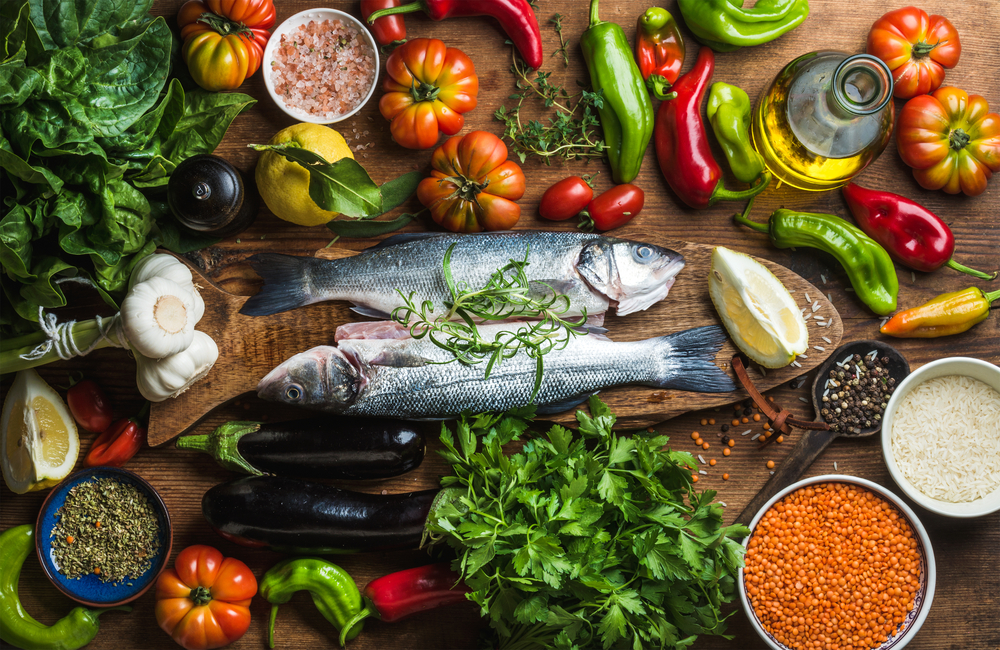Dietary App May Help CF Patients in Meeting Nutritional Needs
Written by |

A mobile, dietary self-monitoring app used for six months to track food choices and manage pancreatic enzyme replacement therapy (PERT) helped children with cystic fibrosis (CF) to better meet disease-specific nutritional guidelines, a study shows.
Still, the nutritional changes made were not sufficient to reach the standards of a healthy and adequate diet for these patients. Further optimization that makes the app easier to use could improve adherence and nutritional outcomes, the researchers noted.
The study, “Change in Nutrient and Dietary Intake in European Children with Cystic Fibrosis after a 6-Month Intervention with a Self-Management mHealth Tool,” was published in the journal Nutrients.
Due to the production of abnormally thick mucus in several organs, most CF patients develop chronic lung infections and pancreatic insufficiency, a condition in which the pancreas is unable to produce enough enzymes to properly digest food.
This lack can affect patients’ ability to absorb enough nutrients and calories from their diet, and leads to several gastrointestinal problems, including malnutrition, fat malabsorption, abdominal discomfort, and impaired growth — which is particularly problematic in children.
As such, CF patients often are advised to take artificial enzymes through PERT with every meal.
These high demands of day-to-day organ system balance results in increased energy needs by CF patients, from one to two times the daily recommended intake for age-matched healthy people.
According to 2016 European CF-specific guidelines, this high energy intake “should be achieved by a macronutrient distribution of 20% protein, 35–40% fat and 40–45% carbohydrates,” and through “careful selection of foods with healthy fat and low sugar content,” the research team added.
Achieving an adequate nutritional status is highly relevant as it is associated with better lung function and survival.
However, up until 2016, general guidelines recommended the consumption of energy-dense and high-fat foods, ultimately leading to the consumption of snacks or ultra-processed foods with high saturated fat or sugar contents.
“Despite the importance of adequate nutrition in CF, research addressing dietary patterns and nutrient intake in the CF population is limited, and high-impact interventional studies to improve dietary habits and nutrition quality are needed,” the researchers wrote.
In a previous European Union-funded project, scientists, along with healthcare professionals, and children with CF and their families, developed a mobile app for the dietary self-management — based on recommended nutritional goals — and PERT dose in CF patients.
Called MyCyFAPP, the app allowed patients to keep a diary of foods eaten throughout the day to help in following their nutrient intake and how they stand relative to recommended goals.
The app also provided informative resources, aiding patients in making choices that meet the current CF-specific nutrition guidelines.
MyCyFAPP was tested in a six-month clinical trial involving 171 children and adolescents, ages 2–18, with CF and pancreatic insufficiency, who were recruited from six European CF centers: Lisbon, Madrid, Valencia, Milan, Leuven, and Rotterdam.
Previous data for this pilot study showed that app use significantly improved children’s gastrointestinal-related quality of life, meeting the trial’s main goal.
Researchers now used the app’s data to analyze changes in energy and nutrition in the 84 children who regularly used the app, and appropriately entered complete food records for at least three days before each one of the trial’s three clinic visits.
A food record was considered complete if at least 1,000 kcal and five meals were registered per day. The children had a median age of 7.8, and were about equal in numbers of boys and girls.
Results showed a gradual, slight reduction in median daily energy intake in these children, away from the minimum recommended values (110% of age-matched healthy children).
The contribution of the three macronutrients (protein, fat, and carbs) to the total daily energy intake “more closely approached the guidelines’ recommendations” after six months, the researchers wrote.
This associated with a significant increase in total protein (14.5% to 15.5%) and fat intake (34.3% to 36.4%), and a significant drop in total carbs intake (46.2% to 44.1%), particularly of simple carbs, or sugar (19.7% to 17.1%).
Still, overall macronutrient distribution in these patients failed to reach the recommended values.
Notably, children in Valencia, Milan, and Leuven had fat and carb contributions within the recommended values at study start and after six months, expect for those from Madrid, who showed a carb reduction beyond the recommended range at the end of the study.
Children in Lisbon also had a carb contribution within (though decreasing) recommendations throughout the study, and best approached the recommended daily intake of 20% protein after six months, with a mean of 19%.
Among all centers, ultra-processed foods showed the largest drop in contribution to total energy intake (between 5–11%), while there was an increase of energy coming from meat (1–3.5%) and dairy products (1–6.5%).
Drops in consumption of ultra-processed food may explain the observed slight decrease in energy and sugar intake, and more meat and dairy products may have contributed to the observed increase in protein and fat intake, the team said.
These findings suggest that using “a mobile app that supports self-assessment of food and nutrient intake and provides nutritional education and practical recommendations could be helpful” for CF patients to meet their recommended healthy diet and macronutrient contribution, the scientists wrote.
“However, as evidenced in this study, the [app] would still need refinement in order to prevent from decline in energy intake and reinforce the reduction of ultra-processed foods intake,” they added.
Given that a previous study collecting these children’s experiences with the app reported the need for improvement in its food recording feature, further adjustments could include “simpler food recording (e.g., voice commands or food scanning) or a simplified and more user-friendly identification of food items,” the team wrote.
“Further technological development and a longer period of follow-up in the context of a long-term observational study with this self-management app could improve the results presented in this study,” the researchers concluded.






